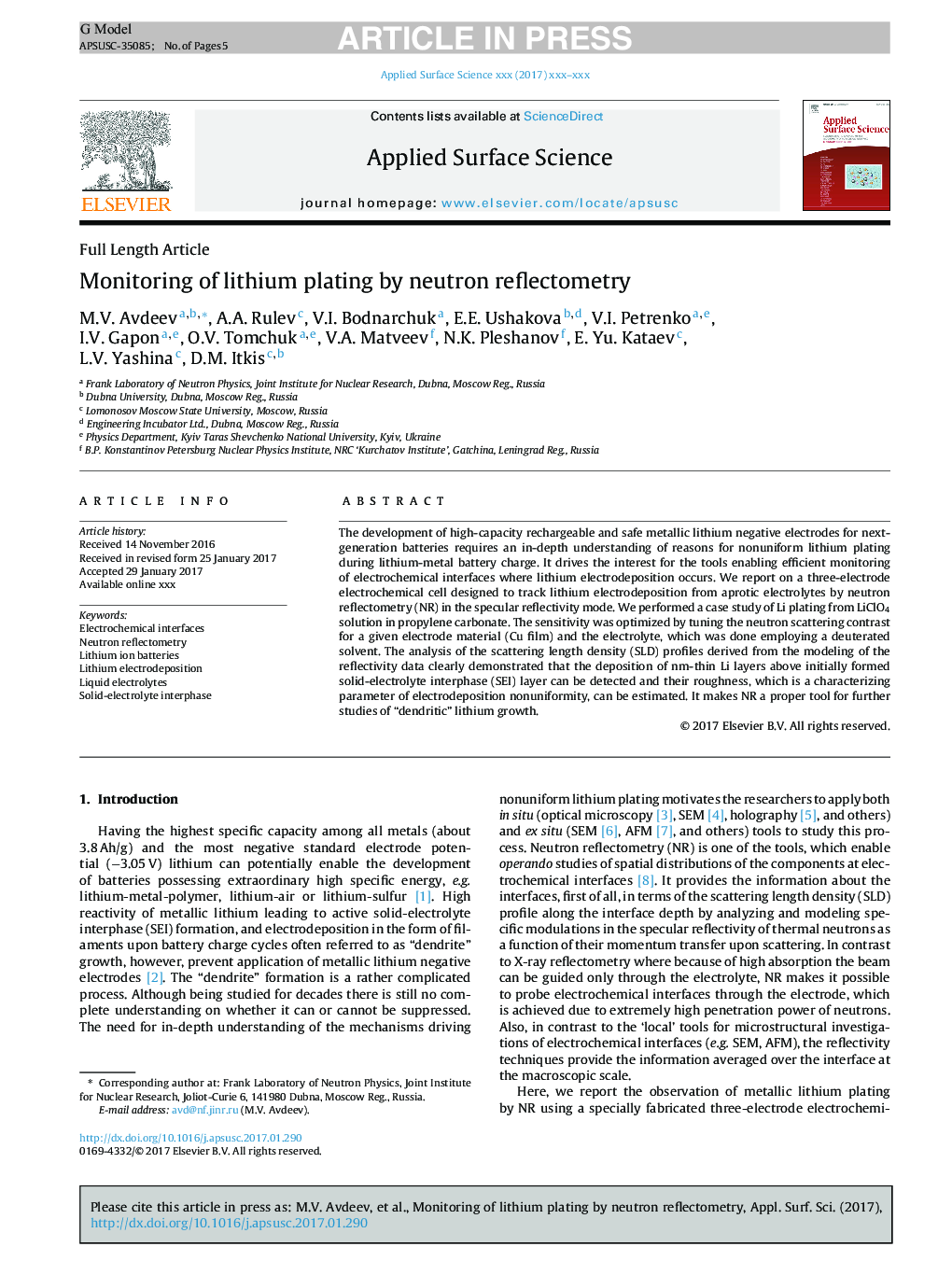| Article ID | Journal | Published Year | Pages | File Type |
|---|---|---|---|---|
| 5351299 | Applied Surface Science | 2017 | 5 Pages |
Abstract
The development of high-capacity rechargeable and safe metallic lithium negative electrodes for next-generation batteries requires an in-depth understanding of reasons for nonuniform lithium plating during lithium-metal battery charge. It drives the interest for the tools enabling efficient monitoring of electrochemical interfaces where lithium electrodeposition occurs. We report on a three-electrode electrochemical cell designed to track lithium electrodeposition from aprotic electrolytes by neutron reflectometry (NR) in the specular reflectivity mode. We performed a case study of Li plating from LiClO4 solution in propylene carbonate. The sensitivity was optimized by tuning the neutron scattering contrast for a given electrode material (Cu film) and the electrolyte, which was done employing a deuterated solvent. The analysis of the scattering length density (SLD) profiles derived from the modeling of the reflectivity data clearly demonstrated that the deposition of nm-thin Li layers above initially formed solid-electrolyte interphase (SEI) layer can be detected and their roughness, which is a characterizing parameter of electrodeposition nonuniformity, can be estimated. It makes NR a proper tool for further studies of “dendritic” lithium growth.
Keywords
Related Topics
Physical Sciences and Engineering
Chemistry
Physical and Theoretical Chemistry
Authors
M.V. Avdeev, A.A. Rulev, V.I. Bodnarchuk, E.E. Ushakova, V.I. Petrenko, I.V. Gapon, O.V. Tomchuk, V.A. Matveev, N.K. Pleshanov, E. Yu. Kataev, L.V. Yashina, D.M. Itkis,
